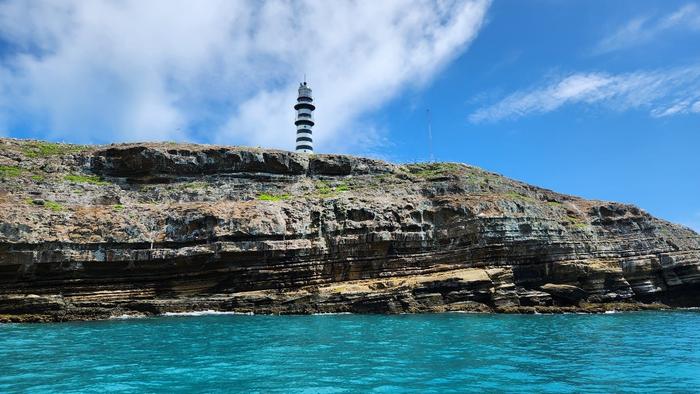Despite their designation as sanctuaries for marine biodiversity, Brazil’s Marine Protected Areas (MPAs) are increasingly showing evidence of contamination by microplastics, according to groundbreaking research carried out by a collaboration of Brazilian and Australian scientists. These areas, especially the most strictly regulated integral protection areas (known locally as APIs), were expected to offer a refuge free from human-made pollutants. However, the findings reveal that microplastic pollution penetrates even these tightly controlled marine environments. This study utilized bivalve mollusks—specifically oysters and mussels—as biological sentinels to monitor contamination levels, providing a novel and effective approach to assessing pollution in marine ecosystems. The research has been published in the internationally recognized journal Environmental Research.
The study’s lead investigator, Ítalo Braga, professor at the Institute of Marine Science of the Federal University of São Paulo and coordinator of this FAPESP-funded project, emphasized that contamination was detected in even the most remote and inaccessible marine protected areas. Atol das Rocas, a biological reserve where human interference is virtually null and tourists are prohibited, exhibited microplastic particles. Braga explained that such contamination likely occurs through atmospheric transport and ocean currents that carry particles over vast distances, illustrating a disconcerting truth: no place on the ocean is immune to plastic pollution.
Microplastics, defined as plastic particles less than 5 millimeters in size, either originate from the disintegration of larger plastic debris or are manufactured at this scale for various industrial or cosmetic purposes. This study characterized the microplastics found along the Brazilian coast as primarily black, white, or transparent particles, mostly smaller than one millimeter. The ubiquity of these tiny pollutants raises questions about the long-term effects on marine organisms and the complex food webs within these ecosystems.
Chemical composition analysis revealed that nearly 60% of microplastics identified consisted of four main types: alkyd polymers, cellulose, polyethylene terephthalate (PET), and polytetrafluoroethylene (PTFE). Alkyd polymers, constituting 28.1% of particles, are typically used in paints and varnishes, and their prevalence suggests sources such as boat coatings and tourist vessels. Cellulose accounted for 21% and may derive from both natural origins like plankton and algae, and anthropogenic sources including paper and cardboard waste. PET, comprising 14%, is common in consumer products like plastic packaging and synthetic textiles, often entering marine environments through laundry effluents and urban runoff. PTFE, known commercially as Teflon, made up 12.3% of microplastics and is associated with non-stick coatings and industrial applications. The remaining 40.6% of particles resisted precise chemical classification, highlighting an urgent need for improved analytical techniques to fully understand plastic pollution profiles.
The selection of study sites included ten integral protection areas across the Brazilian coast, ranging from Jericoacoara National Park in the northeast to the Alcatrazes Archipelago Wildlife Refuge near São Paulo. Among these, Alcatrazes exhibited the highest microplastic concentration, measured at approximately 0.90 particles per gram of wet tissue, while Atol das Rocas had the lowest, at around 0.23 particles per gram. These data underscore variability in contamination likely related to proximity to urban centers, oceanographic conditions, and local sources of pollution, yet confirm the pervasive infiltration of microplastics even in ecosystem refuges.
The researchers utilized bivalve mollusks as biological indicators because of their unique feeding ecology and capacity to bioaccumulate contaminants. These filter feeders draw large volumes of seawater, trapping suspended particles in their gills, which serve a dual respiratory and feeding role. This biological filtration mechanism results in the retention of microplastics within their tissues, offering a stable record of environmental conditions over time. This sampling method provides a critical advantage over transient water sampling, which can fluctuate widely in concentration and composition.
Strikingly, while microplastic contamination was present across all ten integral protection areas studied, the levels were significantly lower than those reported in non-protected coastal regions of Brazil, such as the heavily industrialized Santos area and beaches near Rio de Janeiro. These comparison points are known for microplastic concentrations 50 to 60 times higher, with Santos ranking among the most polluted marine locations worldwide. This contrast highlights both the protective value of MPAs and the overwhelming scale of plastic pollution afflicting urbanized marine environments.
The environmental implications of these findings are profound. Microplastics infiltrate food chains, posing risks to species at multiple trophic levels and potentially impacting human health through seafood consumption. The persistence and chemical complexity of microplastics increase the difficulty of mitigating their effects, requiring integrated management approaches that consider both local conservation enforcement and global plastic pollution control.
Creating MPAs and enforcing strict no-take policies are critical but insufficient measures to halt marine plastic contamination. The study’s authors emphasize that effective environmental management must be complemented by international cooperation targeting upstream pollution sources. Since microplastics can be transported across vast distances by wind and ocean currents, global treaties and regulatory frameworks—such as the Global Plastics Treaty under development within the United Nations Environment Program—are essential to address this pervasive threat comprehensively.
This research also suggests an urgent need for enhanced monitoring programs employing bioindicator species to track microplastic pollution trends over time, particularly in protected marine environments. Through improved understanding, policymakers can better align conservation goals with pollution mitigation strategies, safeguarding marine biodiversity and ecosystem integrity.
In conclusion, the infiltration of microplastics into even the most seemingly pristine marine refuges underscores the alarming reach of anthropogenic pollution in the ocean. While Brazil’s integral protection areas demonstrate relatively lower contamination levels compared to heavily impacted sites, the presence of microplastics within these critical habitats is a clarion call for concerted action at all scales. The findings provide a scientific basis for advancing marine conservation and pollution policy, reinforcing the interconnected nature of ecological health and human responsibility.
Subject of Research: Microplastic contamination in Brazil’s no-take Marine Protected Areas using bivalve mollusks as sentinels
Article Title: Microplastic contamination in no-take Marine Protected Areas of Brazil: Bivalves as sentinels
News Publication Date: 26-Feb-2025
Web References:
https://www.sciencedirect.com/science/article/abs/pii/S0013935125004827?via%3Dihub
http://dx.doi.org/10.1016/j.envres.2025.121231
References:
Braga, Ítalo et al., Environmental Research, 2025
Image Credits: Beatriz Zachello Nunes
Keywords: Water pollution, Oceans, Synthetic polymers, Biodiversity, Coastal zones




